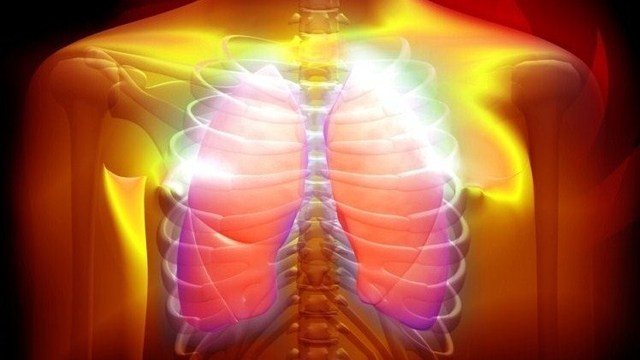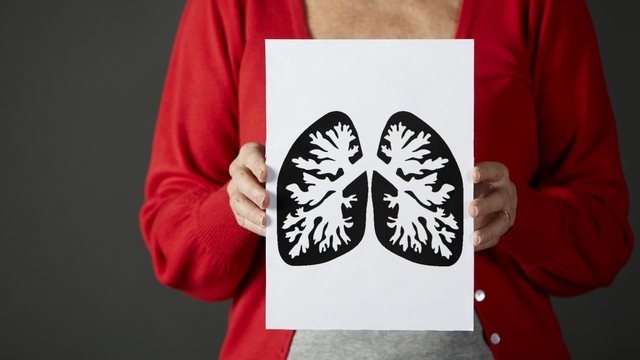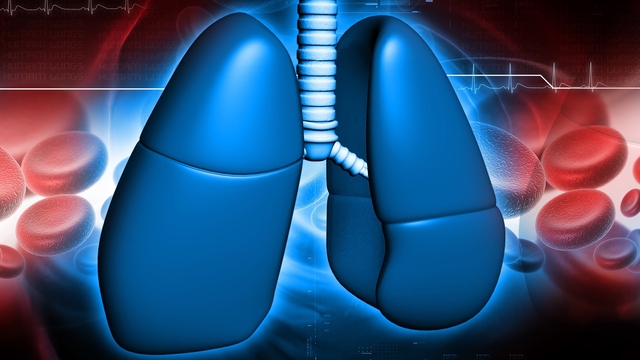COPD or Chronic Obstructive Pulmonary Disease is a long-term disease that affects the lungs. The most common cause of COPD is smoking, although there are cases of nonsmokers with the condition, as well.
COPD is actually a "blanket" diagnosis that includes chronic bronchitis and emphysema, among other lung diseases.
It is estimated that 1.5 million Canadians and 24 million Americans have been diagnosed with COPD.
COPD sufferers will tell you that it feels like they're breathing through a straw.
Symptoms
Symptoms include:
- shortness of breath
- increased mucus (phlegm) and coughing
- a barrel-shaped chest
- wheezing
- frequent and long-lasting lung infections such as pneumonia
- fatigue
- losing weight without trying
Many people consider these symptoms normal with aging, but they're not. If you are experiencing or have experienced any of these symptoms in combination, talk to your doctor.
Diagnosis
The normal diagnostic tool for determining whether or not a person has COPD is a spirometer. A person will blow into a tube and the machine will measure how long it takes for a person to blow all the air out of their lungs. The more severe the blockage a person's airways are, the longer it will take to expel all the air.
Chest X-rays will determine how much damage the lungs have suffered, and blood tests will measure how much oxygen and carbon dioxide is in a person's blood stream.
Treatment
While research continues, there is no known cure for COPD, yet. Until there is, the focus will be on preventing and lessening symptoms and onset of symptoms.
Sufferers of COPD will be recommended to:
- quit smoking
- take medications regularly
- alter lifestyle to stay healthy
- fight germs to keep infections away (washing hands, getting flu/pneumonia shots, keep house and surroundings clean)
- join a pulmonary rehabilitation program (teaches how to exercise, how to get the most from your lungs, and how to manage your condition)
- surgery is rare and only considered if treatments don't alleviate symptoms; lung volume reduction involves the removal of the top 20-35% of the lungs, usually the most damaged portion; lung transplant is considered only when a person will not survive without one.
Breathing Techniques
If you find yourself short of breath, try these simple steps:
- stop and rest (comfortable breathing positions are available at www.lung.ca)
- lower your head and shoulders
- inhale through your nose and exhale through your mouth
- inhale and exhale as quickly as necessary, then begin to blow out more slowly over a longer time (pursed lip breathing may be helpful)
- slow your breathing down by breathing diaphragmatically
- remain in relaxed position for at least 5 minutes after symptoms subside.
It is important for COPD sufferers to also cough up phlegm so it doesn't build up and clog airways. Www.lung.ca has controlled coughing suggestions. Remember if your phlegm is yellow, green or brown or has blood in it, call your family physician.
How to Prevent Flare-Up of Symptoms
Keep yourself in good health - eat healthy foods, exercise, get sufficient sleep, avoid people who are sick. If your body is healthy it stands a better chance of fighting off infections.
Take all medication as prescribed - some are in the habit of not taking their medications because they feel fine. Medications should be taken as prescribed to avoid onset of symptoms.
Get your flu shot - the shot will help keep you from getting sick.
Be aware and avoid symptom triggers - for example, air pollution, smog, second-hand smoke, strong fumes, perfume, scents, changes in the weather, cold air or hot and humid air.
Warning signs of flare-ups include:
- mucus that is yellow, green or brown
- an increase in the amount, thickness or consistency of your mucus
- chest pain
- fever
- swollen ankles
- needing to sleep sitting up instead of lying down
- morning headaches, dizziness, confusion, difficulty sleeping
- blue lips or fingers
- unusual increase in shortness of breath
- feeling sick
If you can't reach your doctor, go to an emergency room.
Ensure that you have discussed and established with your dentist a COPD action plan that tells you what you should do in the event of flare-ups or need for emergency treatment.
Sources: www.lung.ca; www.teamcopd.ca; www.freebreather.com






Add a CommentComments
There are no comments yet. Be the first one and get the conversation started!